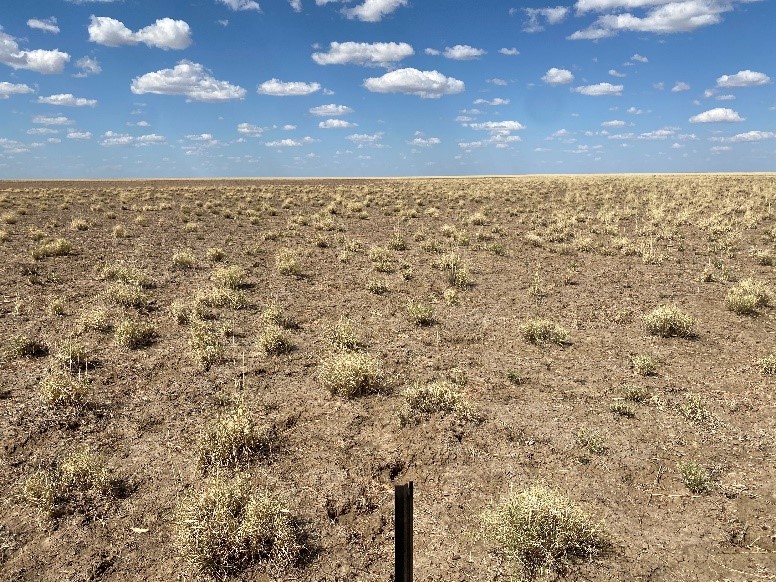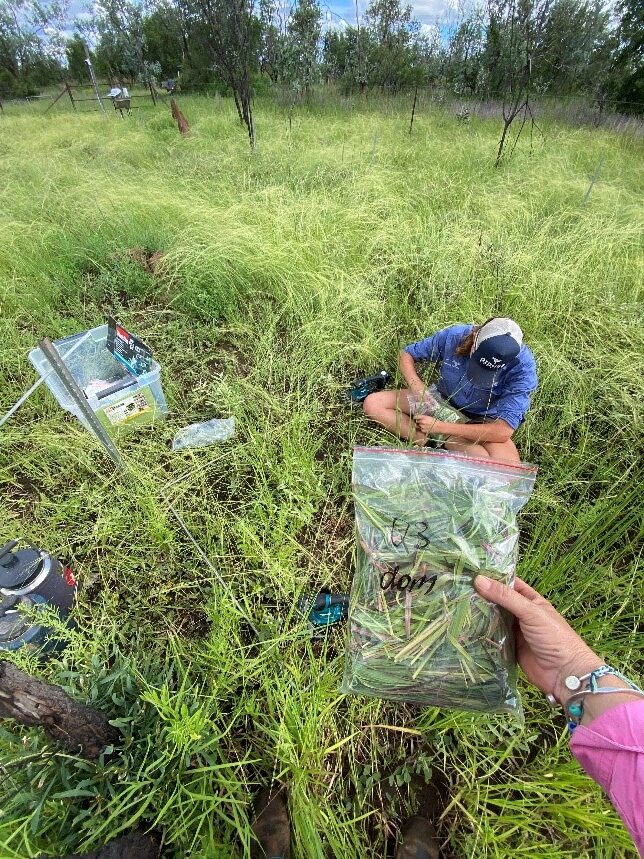Rain ready rangelands
Making your pastures Rain Ready by improving or maintaining land condition means you get more grass for each mm of rainfall and a more reliable feedbase across periods of seasonal variability. Rain Ready Rangelands is a new NT-wide project that will develop three commercial-scale grazing land management demonstration sites showcasing how to make pastures rain ready, aiming to increase recovery after dry periods and be able to make the most of rain events that do occur.
The project aims to deliver regionally relevant grazing land management advice through on-ground, commercial-scale demonstration sites. The project extends across the Alice Springs, Barkly and Victoria River Districts and has a strong focus on identifying and overcoming barriers to adoption of recommended grazing land management practises.
The project will also trial and demonstrate FORAGE in the Northern Territory. FORAGE is an online tool developed by the Queensland Department of Environment and Science that provides automated carrying capacity, pasture growth, ground cover and rainfall summary tailored to any Queensland property. The Rain Ready Rangelands project will investigate the applicability of the FORAGE tool on three properties in the NT. FORAGE reports are currently only available in Queensland.
Rain Ready Rangelands is a collaboration of Territory Natural Resource Management (TRNM) and Northern Territory Department of Industry, Tourism and Trade (NT DITT). Rain Ready Rangelands is a Future Drought Fund project funded under the Drought Resilient Soils and Landscapes Grants Program.
Paddock Challenge (Alice Springs)
 Properties provide a paddock to DITT to compare the outcomes of current station vs. recommended practises in relation to:
Properties provide a paddock to DITT to compare the outcomes of current station vs. recommended practises in relation to:
- Land condition
- Animal production
- Financial performance
Properties will be provided advice on carrying capacity and get to trial different recommended grazing management practises. Changes in pasture composition, land condition, soil health and animal performance will be monitored in all paddocks. Changes through time will be compared to current management on a paired paddock on that property. The practical aspects of applying recommended grazing management will be documented and paddock challenge sites will be modelled to help understand the longer term outcomes for pasture utilisation, land condition, animal production and economics.
Download a copy of the Mulga Park case study August 2024 (PDF, 369KB).
Download the Mt Denison case study August 2024 (PDF, 488KB).
Mitchell Grass Pasture Recovery Demonstration (Barkly)
- Mitchell grass recovery via wet season spelling
- Measuring changes to ground cover, soil and pasture health
- Comparison of no grazing in exclosure vs. wet season spelling vs. continuous grazing without spelling


All paddocks involved in wet season spelling and rotations will be monitored for pasture composition and utilisation, Mitchell grass tussock density changes, ground cover and soil health. Exclosure sites (100m x 100m) will compare grazed versus non-grazed pasture recovery using on ground assessments of vegetation and soil and aerial data collected by a multi spectral drone inside and outside of the exclosures. Farmbot rain gauges and cameras will collect real-time remote rainfall data and provide time series photos of seasonal pasture growth. The process of establishing a wet season spelling plan will be documented as a case study by the Land Manager and DITT to identify any challenges and learnings.
Rain Ready Rangelands – Mitchell grass recovery case study
The Mitchell Grass Recovery Project is looking at ways that grazing strategies, in particular wet season spelling can be used to help minimise the impact of seasonal variability and improve land condition. In this case study, Brumby Vaughan, Manager of Anthony Lagoon Station in the Northern Territory’s Barkly Tablelands shares her experience of implementing wet season spelling as part of the project.
Download the Rain ready rangelands – Mitchell grass recovery case study fact sheet (PDF, 5MB).
The videos below explain what the Mitchell grass recovery project is about, how it works and why it is important.
Forage Budgeting and Climate Literacy Demonstration (Victoria River District)
- CIBO labs pasture yield estimates to help calculate forage budgets at a paddock scale.
- One on one support and a case study on the application of the use of forage budgeting to inform adjusting stocking rates with seasonal pasture availability, to identify challenges and learnings.

FORAGE report demonstration (NT Wide)
- Using NT land type pasture growth models to create automated FORAGE reports on carrying capacity, for up to three NT properties
- SWIFTSYND sites – 30m x 30m enclosures used to collect pasture and soil data for calibrating the GRASP pasture growth model to be used in developing FORAGE reports.
Additional findings that should eventuate from the project:
- how ground cover influences runoff, infiltration and pasture growth
- importance of maintaining recommended pasture residuals
- biocrusts — what they are and their importance
- integration of seasonal forecasts into management.
What information and resources will be supplied to collaborators?
- Stakeholders and collaborators on this project will be supplied with tools to inform grazing land management decision making.
- Increased knowledge on pasture systems, biocrusts and plant resilience.
- Increased knowledge on the benefits of maintaining ground cover.
- Knowledge and understanding about pathways to adoption.
How can updates for this project be accessed?
The project will be running until June 2024 and updates will be provided via written technical content on the FutureBeef website, newsletters posters and fact sheets displayed at events, videos and photos on social media and paddock walks at the demonstration sites.
Project manager
Caroline Pettit, Project Manager and Senior Rangelands Research Officer (NT DITT), phone (08) 8999 2014 or email caroline.pettit@nt.gov.au